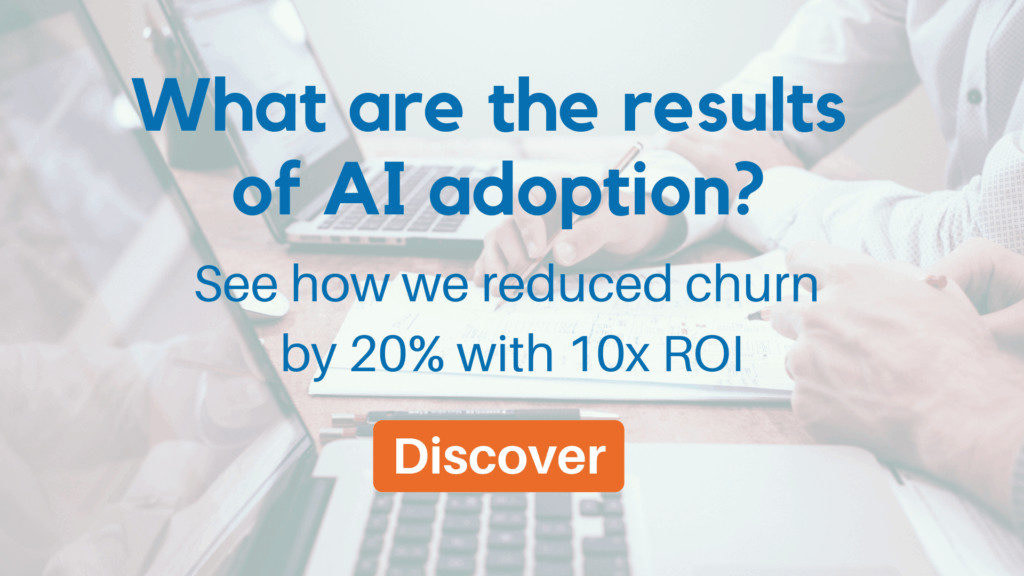With so much buzz surrounding AI, it seems like it’s the solution to all our problems. The wonderful tech that can do everything that needs to be done and wins business leaders competitive edge. But how many real benefits of AI can you name? With the variety of use cases, it’s almost impossible to list all the advantages. Let’s try to cover some of the most important benefits that AI brings for business.
Save time and money
Machines are more efficient than humans. They can work 24/7, they don’t sleep, don’t need breaks, don’t get bored. This means you can rely on them to notify you about important events right at the moment, even in the middle of the night, or to chat with customers whatever time of day it is, etc. Artificial intelligence can analyze vast amounts of data in a blink of an eye – a task that would take hours of arduous human labor or would be even impossible to accomplish. AI can also take repetitive jobs away from people but automating routine work.
AI is automating routine process much like industrial era machines automated labor. It takes AI systems a short moment to make an informed decision – a human will need more time. It’s an obvious time-saver. Let’s have a look at the data from Deloitte’s How much time and money can AI save government? report. The figure below illustrates the most time-consuming tasks of the government workforce and the automation potential of these activities.
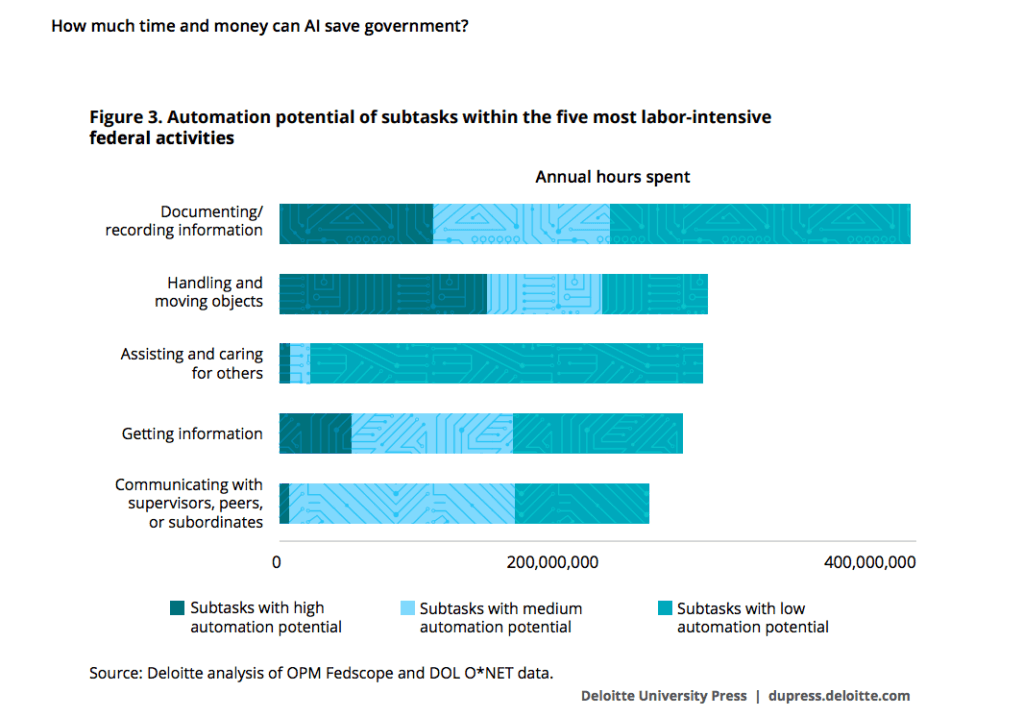
And what about the money? With process automation, the reduction of error, and AI’s capabilities boosting customer experience and sales, you can not only save money on otherwise expensive business processes but also increase revenue.
Coming back to the example of government workforce time savings, Deloitte estimates that even low levels of effort behind AI adoption could save government workforces between 2 and 4% of all their labor hours. With medium involvement, AI and machine learning could bring savings of 13 to 15% of time requirements within five to seven years. And with strong support for AI adoption, the potential benefits are 27 to 30% of time savings within five to seven years. Look at the table below to see the numbers:
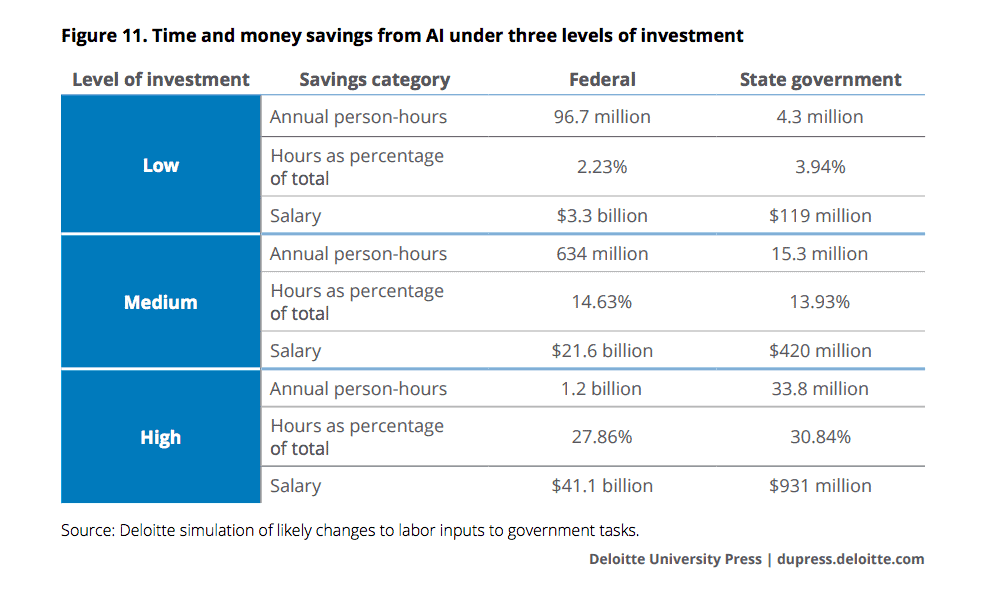
One of the biggest challenges that the telecom industry is facing is growing customer churn. Many companies struggle with preventing churn, mostly to ineffective retention strategies which are often based on randomly contacting as many of the customers whose contract would end in the next months as possible, and giving hefty discounts to those who have already canceled their subscription. The staff is missing information on which customers were most likely to churn and the factors influencing this risk. In our project for a large national telecom, the goal was to reduce churn by 2 percentage points in the segment where it was the highest. During the pilot, we managed to save our client $39k monthly. We reduced churn by 20%, and the client ended up with 10x return on investment.
What’s more, PwC Global estimates that by 2030, the potential contribution to the economy from AI will be 15.7 trillion dollars and the global GDP could be up to 14% higher as a result of AI.
Read also: AI in product development
Generate business insights
Data is sometimes called “the new oil” as it’s become an invaluable resource of the digital economy. But even big data is useless when you can’t make sense of it. Artificial intelligence can help businesses data-mine processing billions of data points in an instant. Whatever question you need AI to answer, it can do it and it will keep getting better at answering. What movie will Jane like? Will customer X churn? Will this item sell out? AI can provide accurate predictions about future outcomes based on historical data. Artificial intelligence converts information into knowledge and even gives you insight into the future! Of course, AI is no fortune-telling technology but it can support your business with predictive analytics. Predictive analytics is a form of analysis with the use of machine learning – the algorithms analyze historical and current data to make predictions of future outcomes.
Read also: bespoke software development services
Predictions are not only useful in the retail industry, though. In banking, for example, AI is used to predict currency and stock price fluctuations. In healthcare, it’s used to predict e.g. hypoglycemic events. Surprisingly, AI was also used to predict outbreaks of infections from analyzing social media posts.
AI-powered tools help companies gain a competitive advantage by creating better products and services tailored to their customers, reduce risk of failures or downtime, reduce costs thanks to predictive maintenance, increase operational efficiency, improve safety and compliance, instantly process data, and to get a better understanding of their customers.
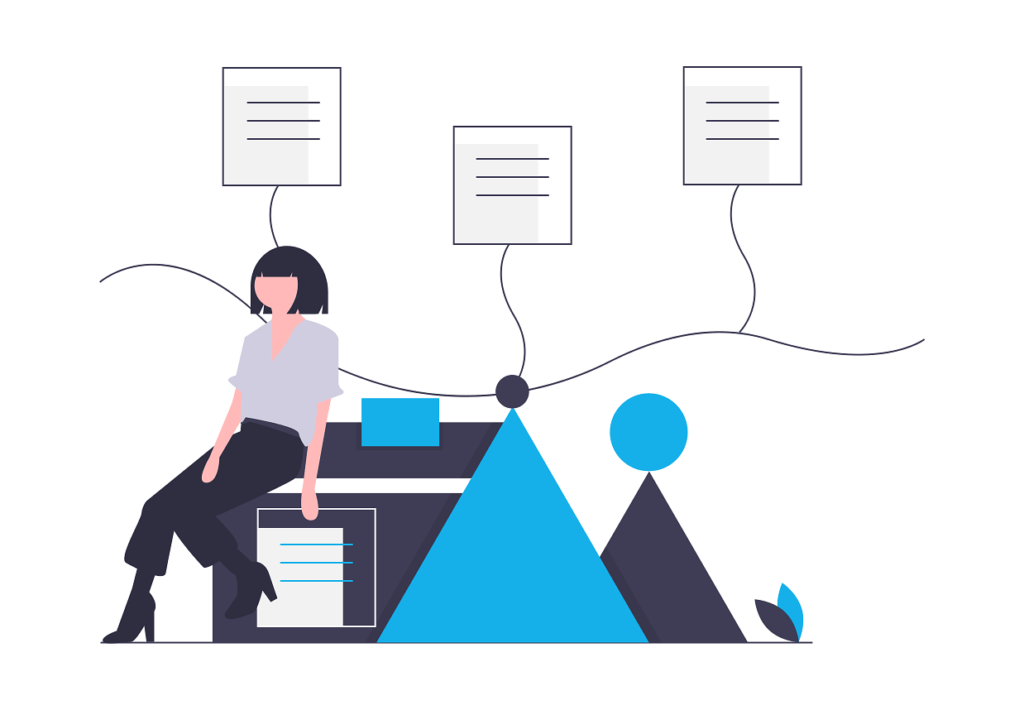
Reduce error
Artificial intelligence isn’t error-free. It can make mistakes but generally speaking, it’s much more accurate than humans. In many cases, the accuracy is around 99%, even for very sophisticated systems, such as Google’s LYNA (Lymph Node Assistant) that achieved the accuracy of 99% and 69% sensitivity in metastatic breast cancer detection, according to VentureBeat.Artificial intelligence is not as prone to errors as humans are – its great advantage is that it makes decisions based on the available data only. It doesn’t have opinions, it doesn’t have emotions. It can, however, reflect the beliefs of people, depending on the type of data the system was fed with. So there’s machine bias. Techopedia defines it as follows:
Machine bias is the effect of erroneous assumptions in machine learning processes. Bias reflects problems related to the gathering or use of data, where systems draw improper conclusions about data sets, either because of human intervention or as a result of a lack of cognitive assessment of data.
Bias can occur as a result of a number of factors, starting with how the data is collected. If, for example, data is collected by means of a survey published in a magazine, we have to be aware of the fact that the answers (data) come from those reading said magazine, which is a limited group of people. Data collected this way is not representative of the entire population.
Let’s now think about the case of Amazon’s AI recruiter that was gender-biased? How did that happen? Even though the system was only analyzing data that did not consist of any opinions, it still concluded that male applicants are superior. Why? The system was trained to assess applicants by observing patterns in resumes submitted to the company over a 10-year period. Most of the resumes came from men, as they generally dominate tech positions.
However, even with some fails like this one happening once in a while, artificial intelligence is still less biased than humans and is simply more accurate. The good thing is that even if a system makes a mistake, it can be fixed. With a real person, on the other hand, it’s not that easy. How do change somebody’s opinion about gender or racial equality? The issue of machine bias is sometimes brought up as a reason not to implement artificial intelligence. In reality, though, no human being can be as accurate as artificial intelligence. It’s also worth to remember that the bias carried by AI is the result of human error or judgment.
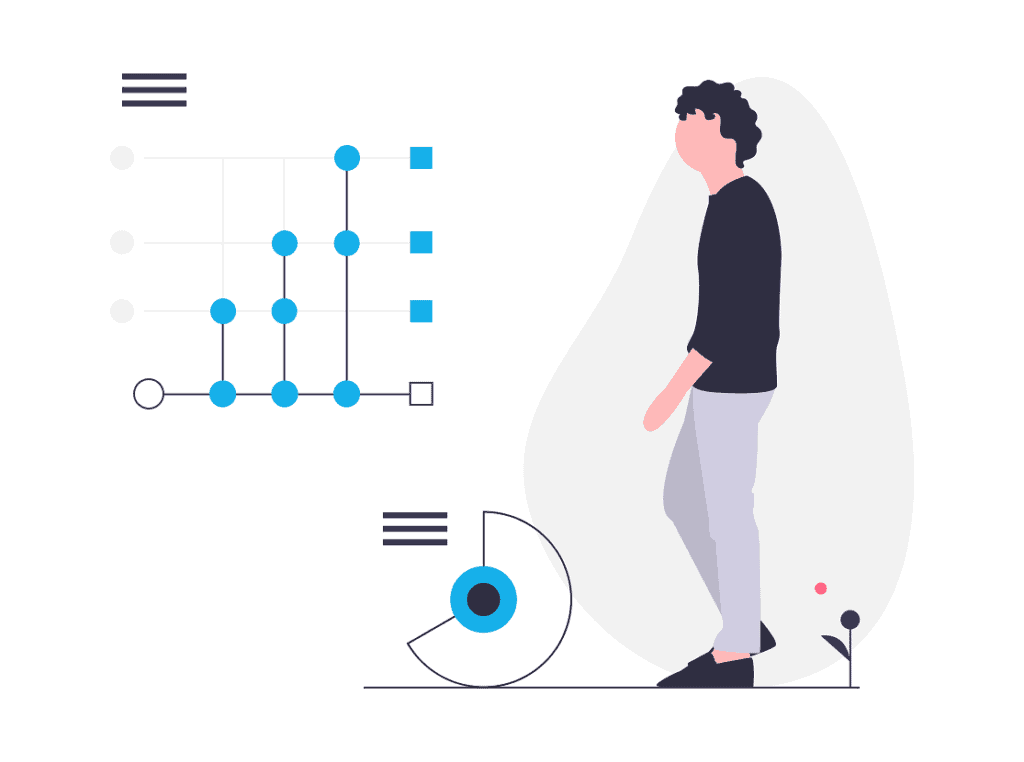
Enhance customer experience
Artificial intelligence solutions are beneficial to both businesses and their customers. It’s much easier to justify collecting different types of data when you actually bring value. Most people are well aware of how much information companies such as Google or Facebook gather from them. But in return, we get what is called a “free” service. In reality, it’s “free” in terms of monetary payment – the currency we use to pay for such services is our personal information. And we’re mostly fine with that.
Users love the fact that Netflix shows them the movies that are actually fun, Spotify creates personalized playlists that they enjoy, Uber arrives fast and gets them to the destination at an affordable rate, Alexa prepares their shopping list. Companies know where we live, what our jobs are, where we are at a given time of the day, what we buy, what we watch, what we listen to. Thanks to observing users’ behaviors, they can make sure that the products or services they offer are relevant and attractive. They create customized experiences. And honestly, in the past, customized experiences were a luxury that only the most wealthy could afford. Nowadays, though, the vast amounts of data create patterns that allow companies to learn about users and be prepared to treat them in an individualized way.
Another important thing here is that AI is available non-stop. AI-powered apps can assist customers no matter the time of the day. In the transport industry, AI is used to communicate with customers in real-time to send personalized travel information and provide them with up-to-date information about their transportation, e.g. where exactly they are or when they’re going to arrive at their destination.
In the times when the market is extremely competitive, AI-powered solutions help create great customer experience which helps increase customer loyalty and boost sales. A study conducted by Zendesk shows that 42% of B2C customers purchase more after a good customer service experience, while bad customer service interactions result in 52% of customers not buying. 59% of shoppers who experienced personalization think that it has a big influence on their purchase decisions. When Amazon introduced their recommendation system, they saw a 29% increase in sales. These numbers show that the “everyday” use of AI that customers are already accustomed to brings real value.
Read also: What can AI do for your business?
Advantages of AI – limitless?
As you can see, the advantages listed below are all quite general. Why is that? Well, in reality, every use case brings different benefits. Using artificial intelligence development services, you can improve customer service with the use of chatbots and recommendation systems, increase revenue by identifying and maximizing sales opportunities, predict product demand, classify customers, predict customer behavior, detect fraudulent credit card transactions, detect malware, review documents, do research, help diagnose patients… The list could go on. The key in looking for the benefits of AI is not in what other people think about it – it’s about finding the value it can bring to your organization.
